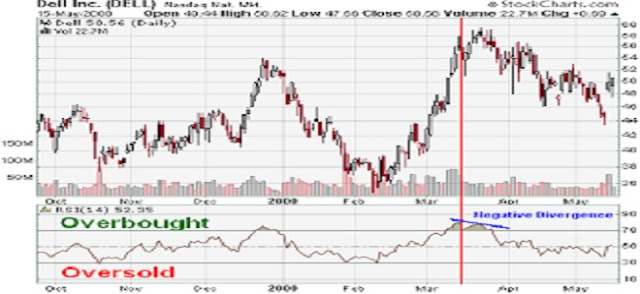The IHR indicator: the basis of Andrew Cardwell Junior's Trading model
The ideal technical indicator according to Andrew Cardwell Junior is the one that offers the ability to identify and monitor a current trend, identify extreme areas of overbuying and selling and provide early alerts about a change in trend.
According to Cardwell, that indicator is the RSI or Relative Strength Index, which in his opinion offers the best of all these worlds. In fact, the RSI is the cornerstone of the trading model of this expert investor, which consistently provides lectures related to the technical analysis applied to financial markets.
Recommendations
Cardwell asserts that in all the readings and lectures it has provided, it has always shown that the RSI can be used as an important element of a trading strategy based on technical analysis as a stand-alone trading model on its own. In his case, Cardwell employs the IHR as a stand-alone model to identify trends, supports and resistances, levels of over buying and selling, divergence, trend changes, reversals and target prices for profit-making.
Most of the operators using the IHR focus their attention on trying to identify bullish and bearish divergences. The basic price and the divergence of momentum can be of great help in identifying extreme conditions of overselling and buying on the market.
However, most traders are victims of the concept of divergence and think that it is simply the end or change of a prevailing market trend. Everything would be very simple in the world of financial markets if there was a change in trend with each divergence. However, there are few occasions when sentiment and momentum are so strong that the market continues with the trend and makes new high or low, which keeps the RSI in the levels of over purchase or on sale for extended periods of time. Both momentum and price corrections, when they occur, are usually strong and fast. After these brief reprieves, the market is again ready to resume its previous trend, whether bullish or bearish. With each new high or low successive as well as with each new divergence formed, the operators eager and with little experience are usually shown more than ready to assume that they are before the ceiling or the background of a trend and therefore believe that it is the precursor of a change of direction in the market.
However, in markets with strong tendencies, it is not uncommon to have multiple divergences that only lead to slight corrections of the condition of over buying or selling the market. For this reason, if an operator tries to take positions based only on divergences, probably in a short time will see its capital appreciably depleted as it will always be trying to guess if it is before the ceiling or the bottom of a trend.
At this point Cardwell says that although it takes note of the divergences, these are only indicative of the market is overextended and needs a correction of the condition of over purchase or on sale. Although the RSI is considered a momentum oscillator, for Cardwell it has more value as a trend tracking indicator.
One of the Cardwell guidelines when it comes to operating is to identify a range for both bullish and bearish tendencies. As the market tends to rise or fall, it adjusts the normal range of the RSI (70-30) to take into account the change in the momentum of the market and the upward or bearish sentiment of the other operators. The fact that these adjustments need to be made in the RSI range is one of the first indications that the market is experiencing a change in trend.
An operator's ability to recognize a change in trend quickly, open a position, and operate in the direction of the next trend is the ability that any operator should develop to be successful. By having a position that goes according to the trend, the operator will have the opportunity to participate in the major movements of the market, which are the ones that produce the most profit.
Finally, Cardwell says that the three keys to be successful in trading in the financial markets are:
Have a strategy to operate.
Be patient.
Be disciplined.












0 Comments:
Post a Comment